Two-Tier Garden Ideas with Sleepers: Transform Your Outdoor Space
Creating a multi-level garden can transform an ordinary outdoor space into a beautiful oasis. By introducing sleepers into the design, you can add structure and definition to your garden, making it both functional and visually appealing.
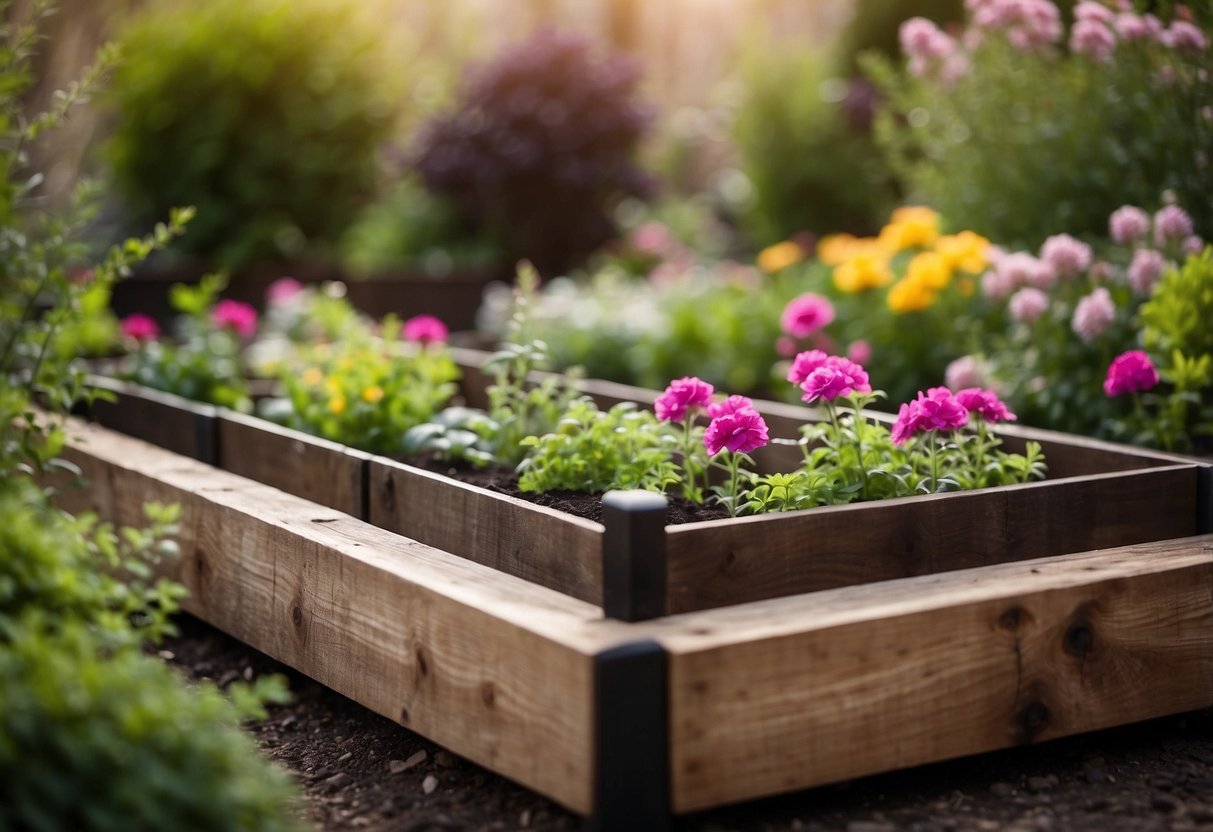
Why choose two-tier gardens with sleepers? These designs not only maximize the use of space but also offer a charming, rustic aesthetic. Whether you’re looking to create distinct planting areas or elevate certain features, sleepers provide a versatile and stylish solution.
1) Raised Bed Planter with Reclaimed Sleepers
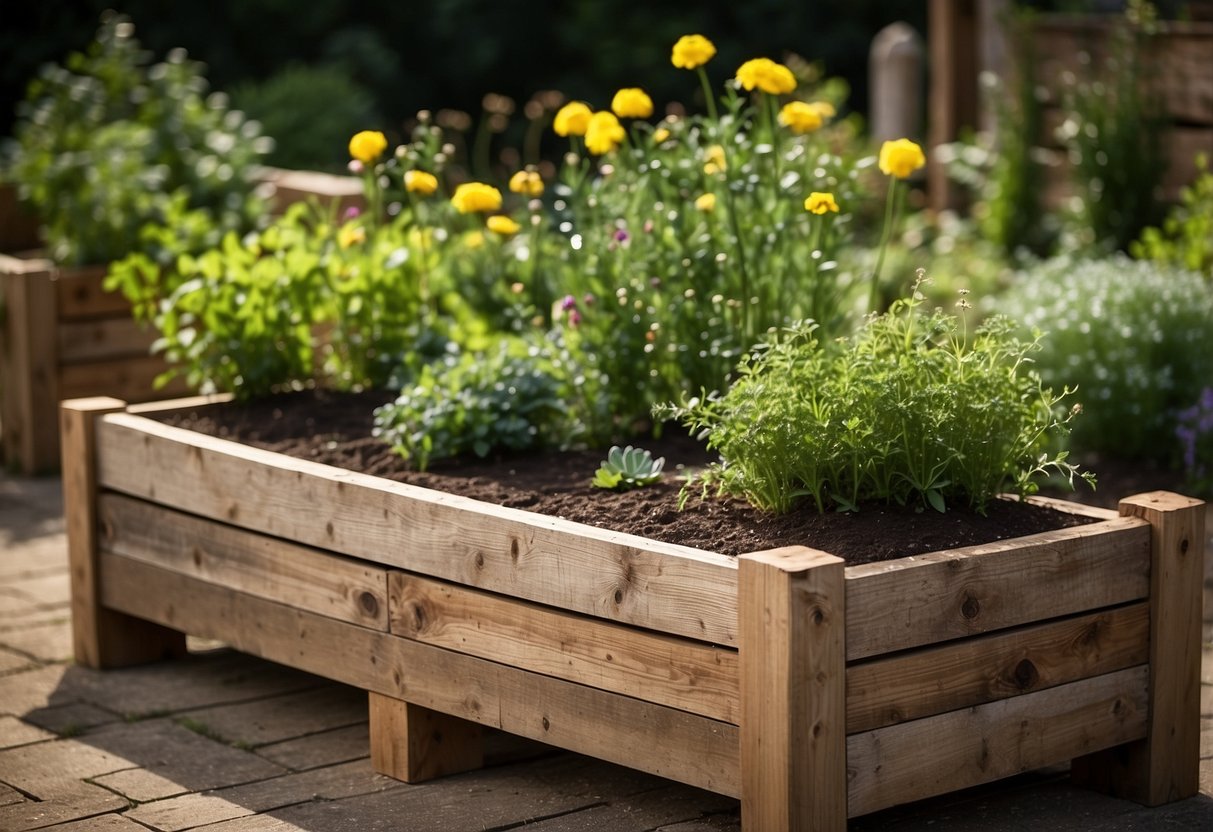
Using reclaimed sleepers for a raised bed planter adds a rustic touch to your garden. Reclaimed wood is eco-friendly and gives a unique look to your space.
Stack the sleepers in two tiers to create more planting depth. This setup can support various plants, from herbs to flowers.
Secure the sleepers using metal brackets or wooden dowels for stability. Make sure the structure is level to prevent soil from spilling out.
2) Multi-Level Flower Beds

Adding multi-level flower beds can transform your garden. You can use railway sleepers garden edging to give your garden a structured look. Planting different flowers on each level keeps the garden interesting.
With wood borders, you can create a rustic edge. This creates a warm, cozy feel. The steps can also help you manage your plants more easily.
3) Rustic Wooden Steps
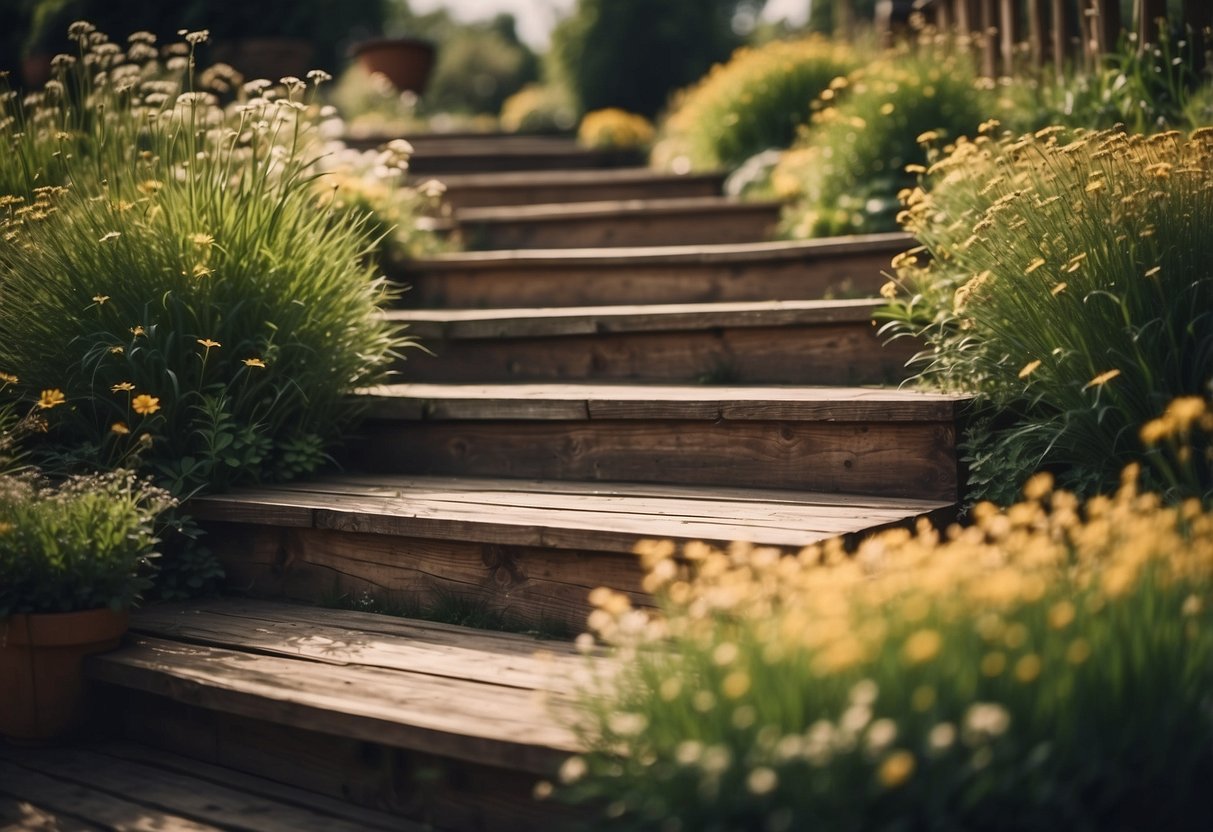
Consider adding rustic wooden steps to your garden for a natural and welcoming feel. These steps blend beautifully with any greenery and create a cozy, inviting pathway.
You can use weathered wood, which provides a charming, rustic look. Line the steps with small plants or moss for added beauty.
Using railway sleepers can also add a unique character. They are sturdy and can be softened with low-growing foliage. Learn how to create this look at the BillyOh website.
4) Modern Timber Retaining Walls
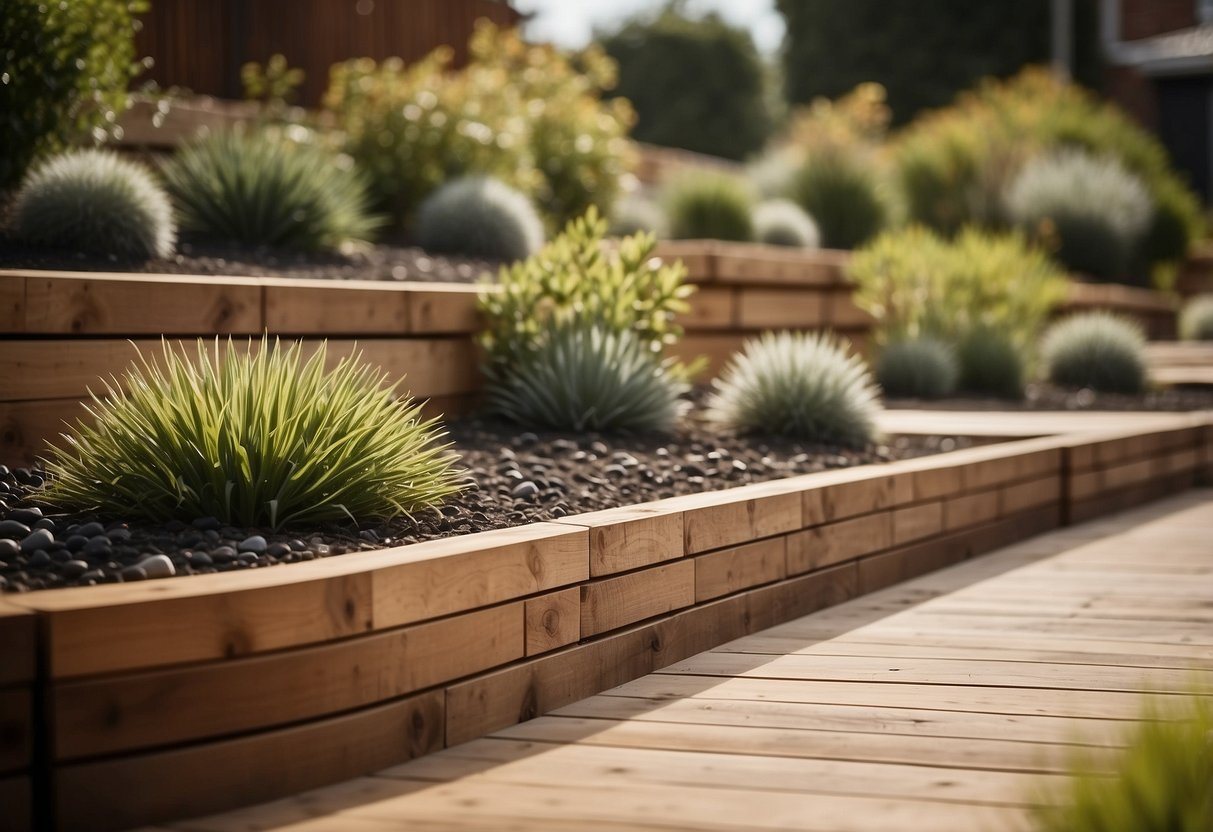
Modern timber retaining walls bring a natural and sleek look to your garden. They work well with different styles, from minimalist to more rustic designs.
You can use treated timbers like railway sleepers for durability. These versatile materials can be stacked horizontally or vertically, depending on your aesthetic preference.
Timber retaining walls also create raised garden beds and can be combined with seating areas for added functionality. It’s an eco-friendly choice that blends seamlessly with outdoor settings. For more ideas, check out this gallery of retaining wall materials.
5) Tiered Vegetable Patches
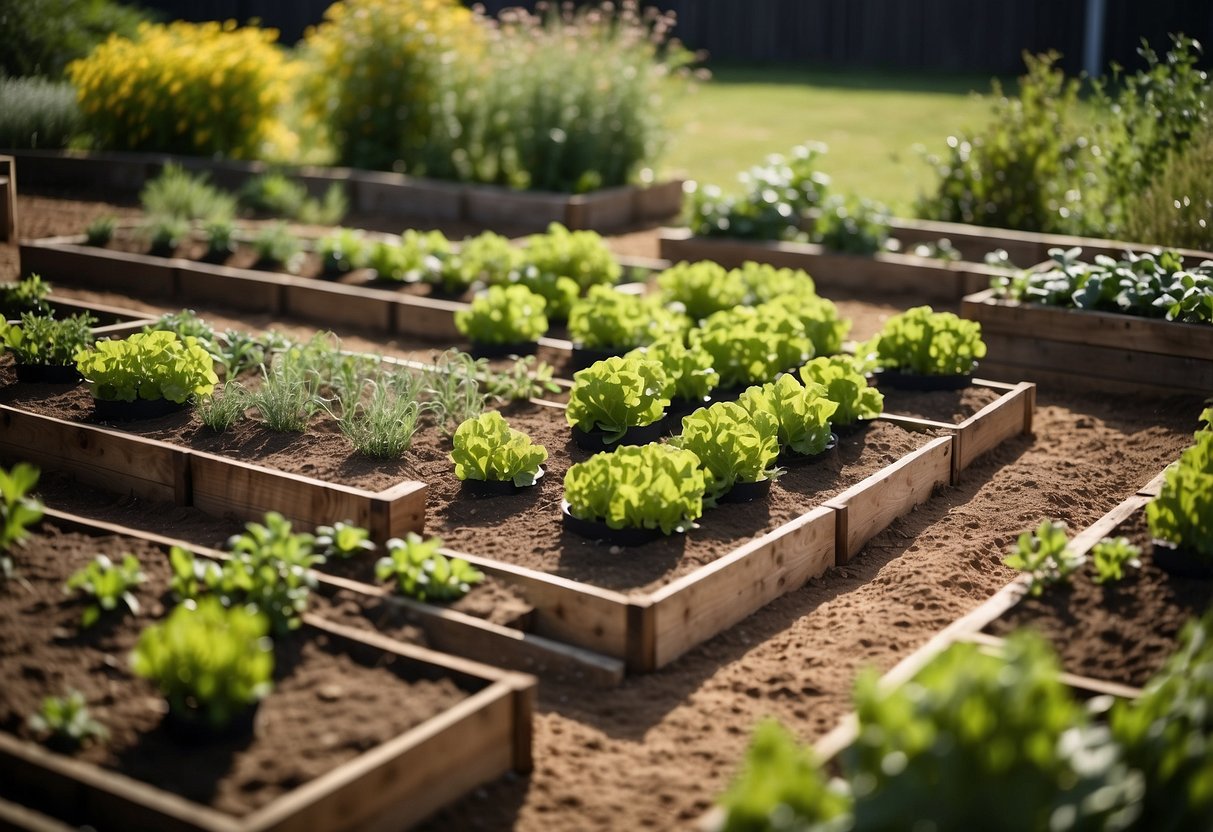
Creating tiered vegetable patches with sleepers can be both functional and beautiful. You can maximize your growing area on a slope and make your garden look great at the same time.
Use sleepers to create raised beds on each level. This makes it easier to plant and take care of your vegetables.
Consider adding compost to improve the soil quality. With tiered gardens, you have better control over drainage, which is a big plus for vegetable growth.
For more ideas about using sleepers, check out this guide.
6) Simple Two-Tier Herb Garden
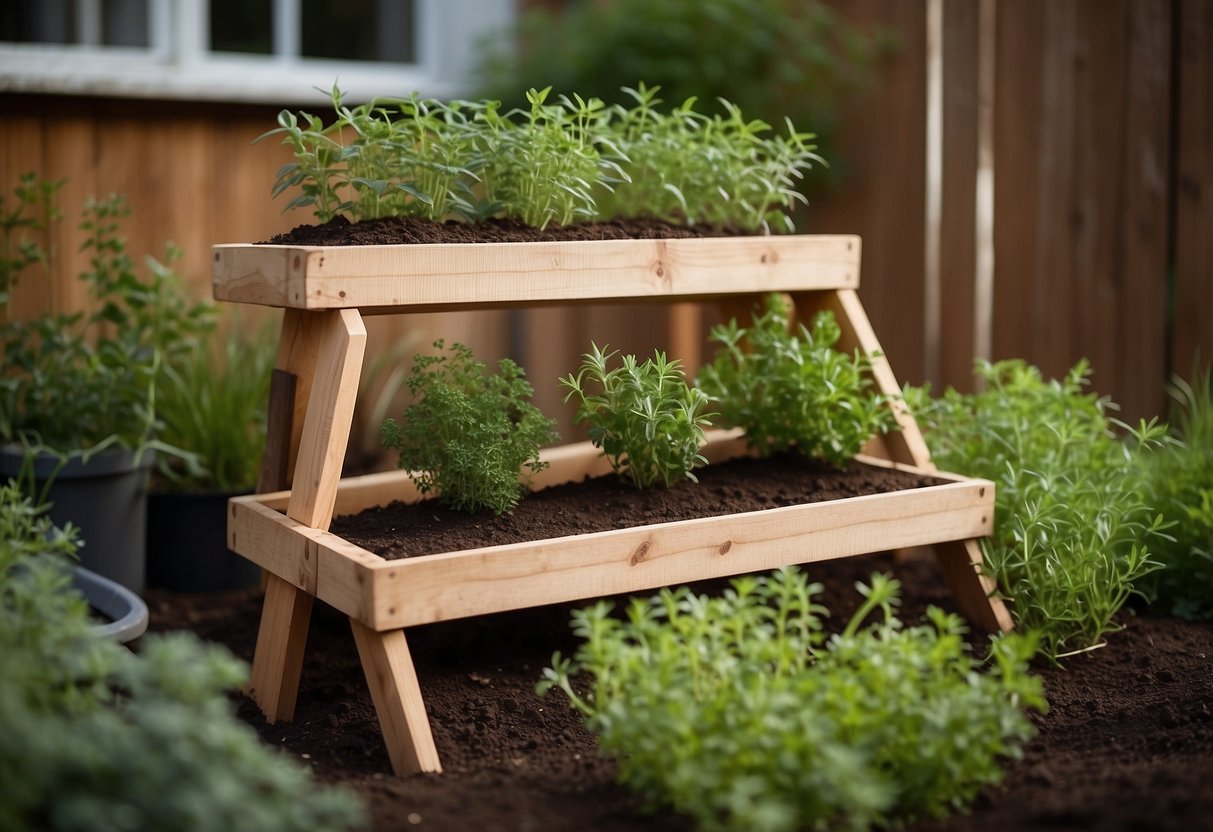
A two-tier herb garden with sleepers is easy to set up and looks great.
Use sleepers to create two levels. Plant herbs like basil and mint on the top tier. On the lower tier, you could grow thyme and rosemary.
The sleepers give the garden a natural look and keep the soil in place. Try it out and enjoy fresh herbs from your garden.
7) Terraced Shrub Borders
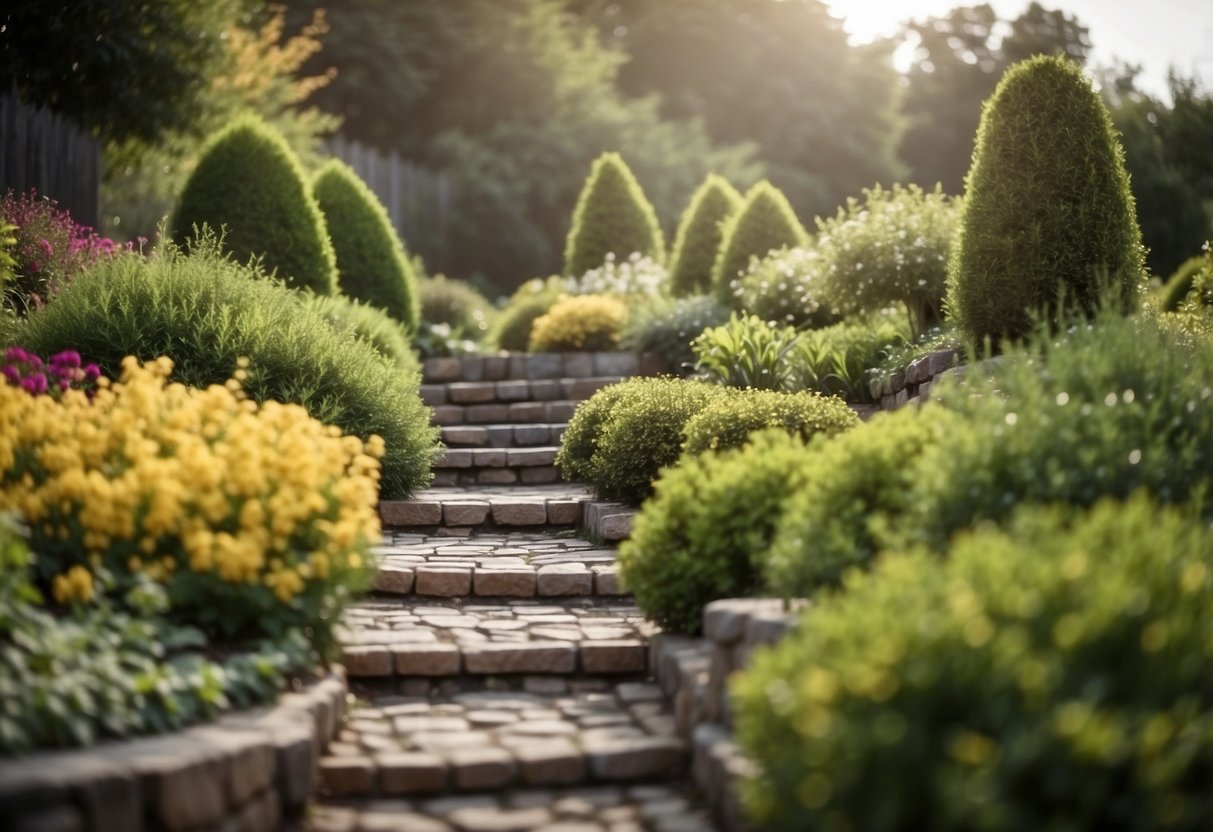
Creating terraced shrub borders with sleepers can add charm to your garden. Use timber beams to build multiple levels for your shrubs. This gives your garden a structured yet natural look.
Plant different types of shrubs on each level. The variety and layering will make your garden more eye-catching. Choose shrubs that thrive in your local climate for best results.
For an added effect, you can use sleepers to edge the pathway between the tiers. Fill any gaps with small plants or pebbles for a polished finish. You’ll enjoy the lush and organized look of your terraced garden.
8) Wooden Seat with Planters
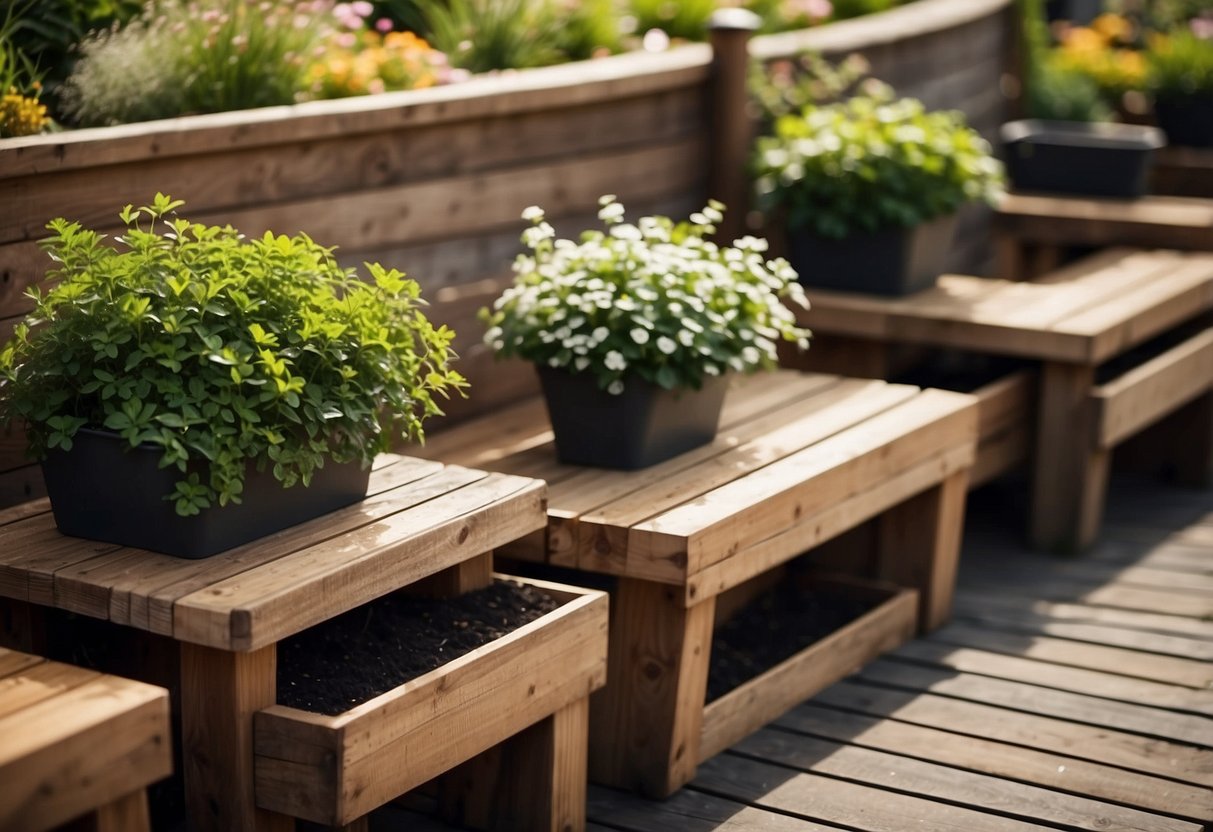
Add charm to your garden by creating a wooden seat with planters. You can use garden sleepers to make a sturdy bench. Place planters on each side for a cozy and inviting spot.
Choose your favorite flowers or small shrubs for the planters. This adds color and life to your seating area, making it perfect for relaxation.
Incorporate some cushions or throws to make your wooden seat even more comfortable. This simple addition can transform your garden into a welcoming retreat. For more ideas, check out garden sleeper ideas.
9) Vertical Garden with Sleepers

Using sleepers for a vertical garden is a great way to create a stunning look. Start by positioning your sleepers upright to form a sturdy wall.
Attach planters or pockets to hold your plants. This method works well for small spaces.
Choose plants that thrive in vertical environments. Herbs, small flowering plants, and succulents grow beautifully. Be sure to water regularly and check for proper sunlight.
For more tips on setting up, check out this guide on how to landscape with sleepers.
10) Children’s Play Area with Sleeper Edges
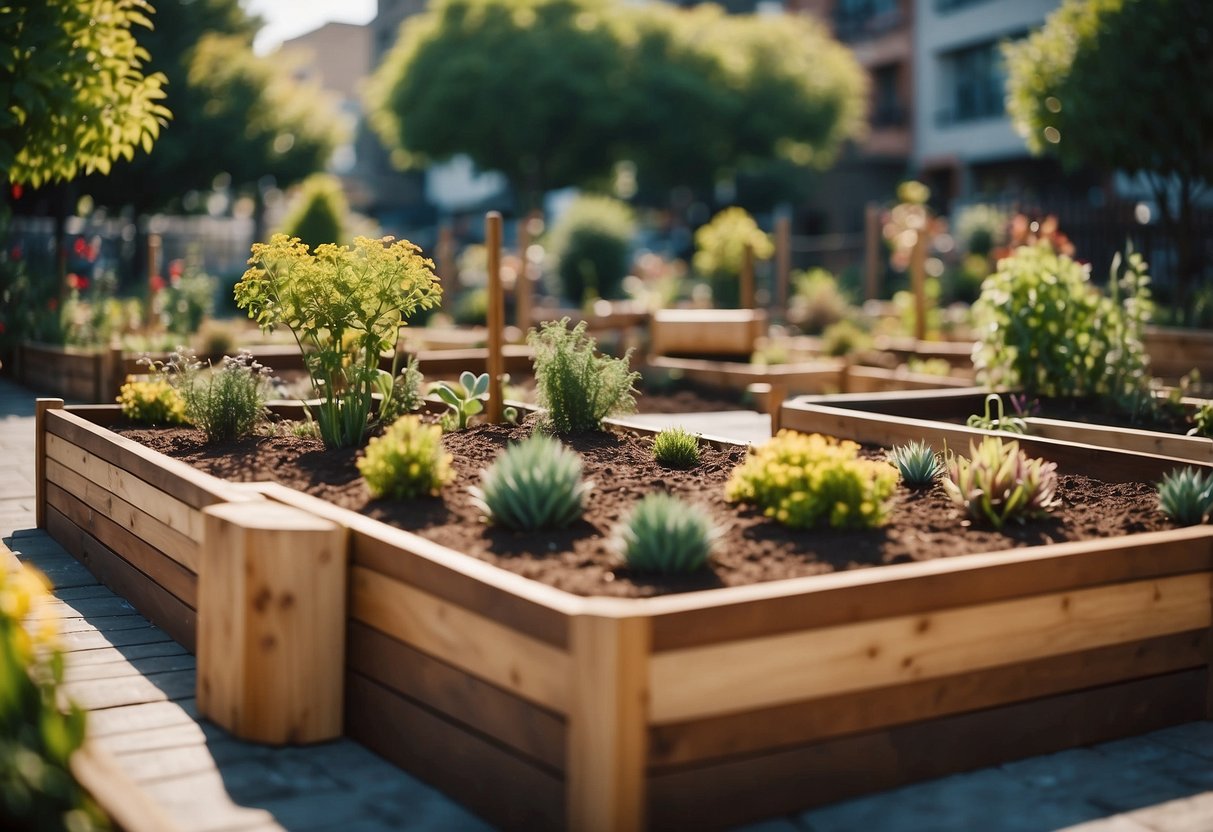
Creating a children’s play area with sleeper edges is a fun and practical way to keep kids entertained. Sleepers can provide a sturdy boundary for different play zones, such as sandpits or mini playgrounds.
By using sleepers, you can design safe and defined spaces. Consider adding elements like swings or climbing frames.
These structures not only enhance visual appeal but also contribute to a secure playing environment for children. For more ideas, check out enticing play areas with garden sleepers.
Benefits Of Using Sleepers
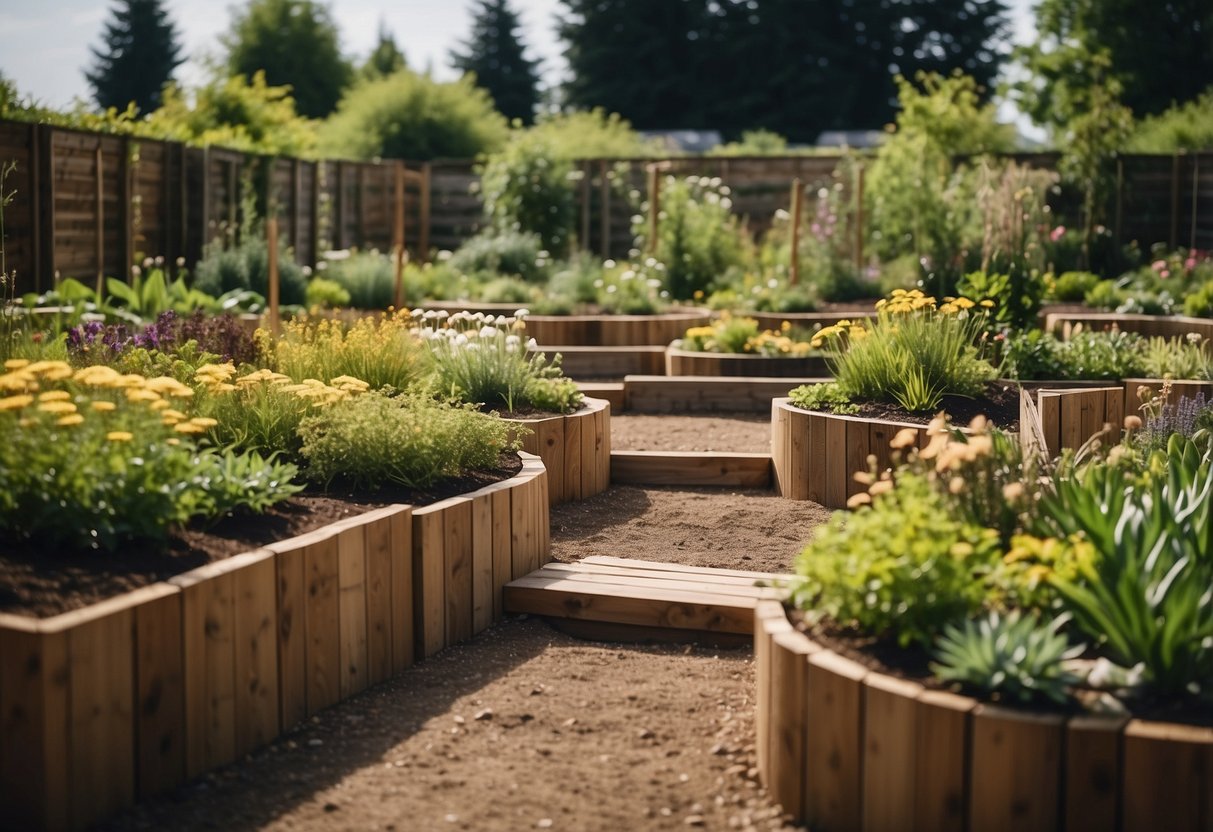
Using sleepers in your garden offers many benefits. They are incredibly versatile and can be used to create a variety of features and structures.
First, sleepers are durable. Made from treated timber, they can withstand harsh weather conditions and last for many years.
Another benefit is their aesthetic appeal. Sleepers add a rustic charm to your garden, enhancing its overall beauty without overpowering other elements.
Sleepers are also easy to install. You can lay them out yourself without needing specialized tools or expertise, making it a fun DIY project.
With sleepers, you can improve soil management. Raised beds made from sleepers ensure better drainage and soil control, which promotes healthier plant growth.
Sleepers provide strong support. Whether you’re creating garden paths, retaining walls, or steps, sleepers offer a sturdy and reliable solution.
Environmentally friendly options are available. Many sleepers are made from recycled materials, making them a sustainable choice for your garden.
Here’s a quick summary of the benefits:
| Benefit | Description |
|---|---|
| Durability | Withstands harsh weather, long-lasting |
| Aesthetic Appeal | Offers rustic, charming look |
| Ease of Installation | Simple to lay out, great for DIY |
| Soil Management | Better drainage and soil control |
| Strong Support | Reliable for paths, walls, and steps |
| Eco-Friendly | Options made from recycled materials |
Considering these benefits, sleepers can greatly enhance your garden’s functionality and beauty. To explore more ideas and learn how to use sleepers creatively, visit here.
Design Considerations

Choosing the right sleepers and figuring out the best way to incorporate steps and levels are crucial for your two-tier garden project. Both aspects can greatly influence the aesthetics and functionality of your garden.
Choosing The Right Sleepers
When selecting sleepers, your first consideration should be material. Timber sleepers—like oak or pine—are popular for their natural look and durability. For a more modern touch, you might prefer concrete sleepers.
Ensure the sleepers you choose are pressure-treated to resist rot and insects. This is especially important for outdoor use, as untreated wood can deteriorate quickly.
Also, think about the size of the sleepers. Standard sizes are usually 2.4 meters long, but shorter lengths can be easier to handle if your garden space is limited.
Remember that some sleepers come reclaimed. These have a rustic charm and an eco-friendly aspect but might require additional treatment.
Incorporating Steps and Levels
Steps and levels add depth and interest to your garden. Start by planning the placement of your tiers. Consider accessibility and flow. Steps made from sleepers can be both functional and attractive.
Use railway sleepers to build sturdy and rustic steps. They can be arranged in various configurations, with straight or curved lines reflecting different garden styles. Planting low-growing foliage along the sides can soften the hard edges and integrate the steps into your garden seamlessly.
If you have children or elderly family members, ensure the steps aren’t too steep. Adding handrails for safety might be necessary. Don’t forget to incorporate adequate drainage underneath the sleepers to avoid water accumulation and potential damage.
Building Tips

When building a two-tier garden with sleepers, it’s important to start with proper ground preparation and ensure the structure’s stability. This helps create a safe and attractive garden area.
Preparing The Ground
Before you begin, clear the area of any debris and weeds. Use a spade to dig out the soil where the sleepers will be placed. It’s helpful to make the base about 6 inches deep. This creates a solid foundation.
After digging, check for level ground using a spirit level. Uneven ground can lead to problems later. Once the ground is level, place a layer of gravel or crushed rock. This provides good drainage and adds stability to the base.
To prepare the ground:
- Clear the area: Remove weeds and debris.
- Dig the base: Make it around 6 inches deep.
- Level the ground: Use a spirit level.
- Add gravel: This helps with drainage and stability.
Maintaining Stability
For stability, use treated timber for your sleepers. Treated timber lasts longer and resists rot. When stacking sleepers for a two-tier design, overlap the joints like brickwork. This interlocks the sleepers, adding strength.
Secure the sleepers with heavy-duty screws or metal brackets. This prevents shifting over time. Reinforce the structure with metal rods or rebar if the tiers are tall. This helps in bad weather or with heavy planting.
Seal the wood with a weatherproof treatment to protect against the elements. Regular checks and maintenance ensure the garden stays solid and safe.
To maintain stability:
- Use treated timber: It’s durable and rot-resistant.
- Overlap joints: Stack like bricks for strength.
- Secure with screws or brackets: Prevent shifting.
- Reinforce with rebar: Adds extra strength.
- Seal the wood: Protect against weather.







